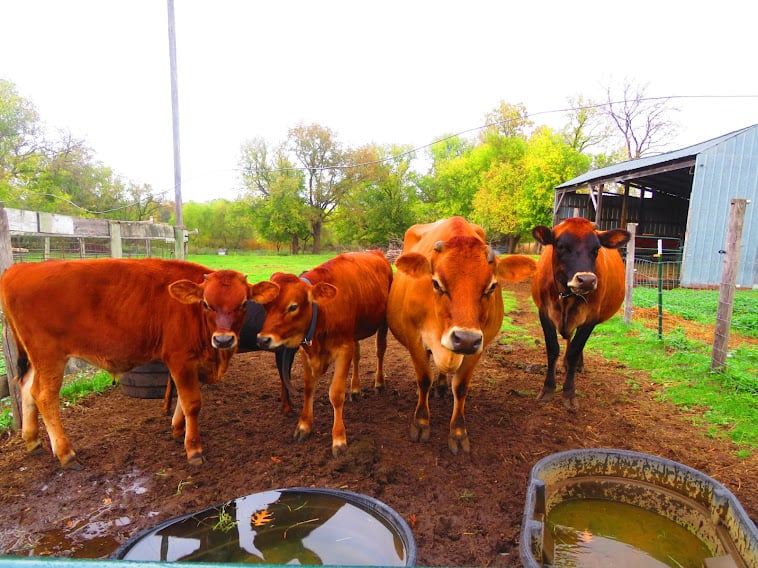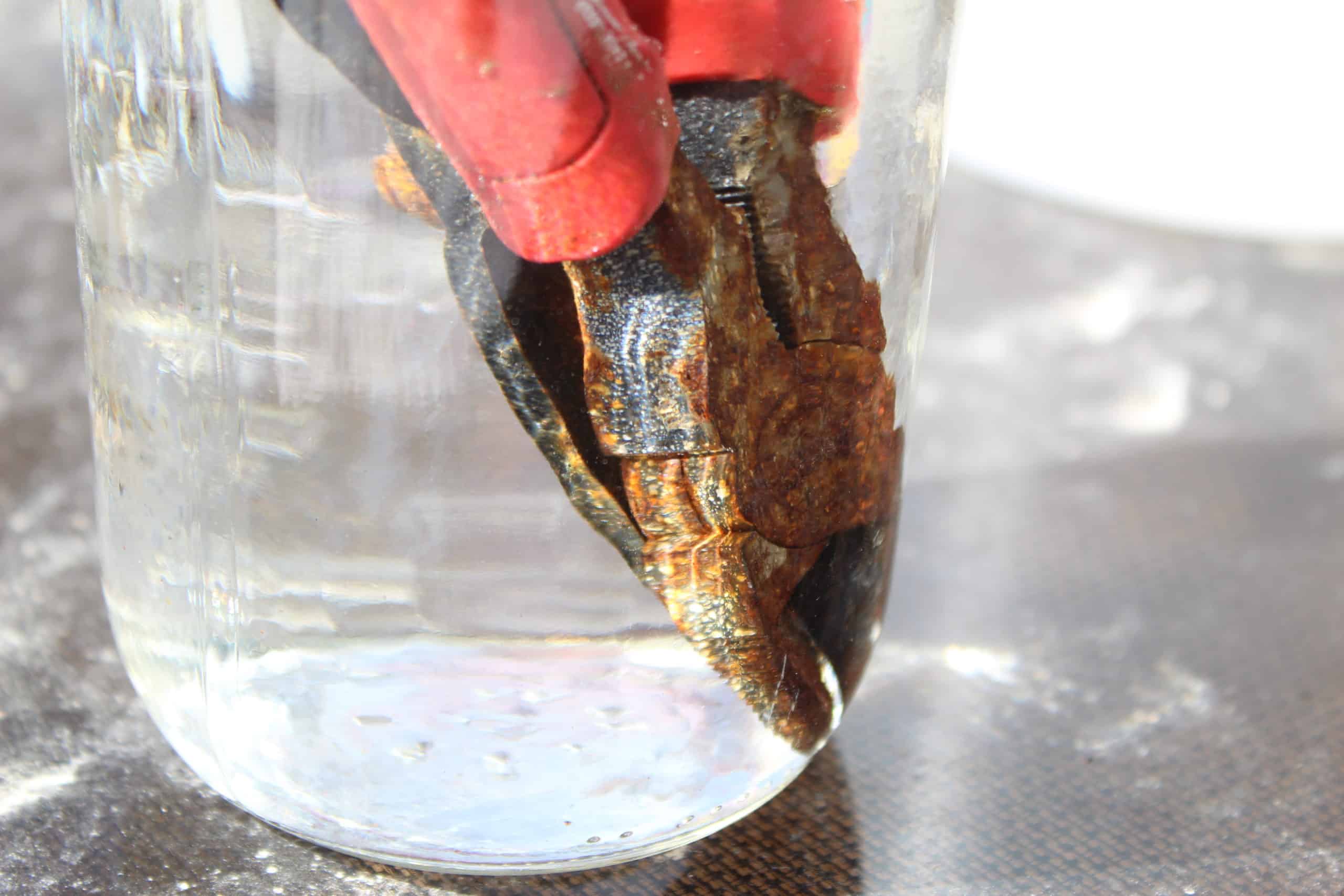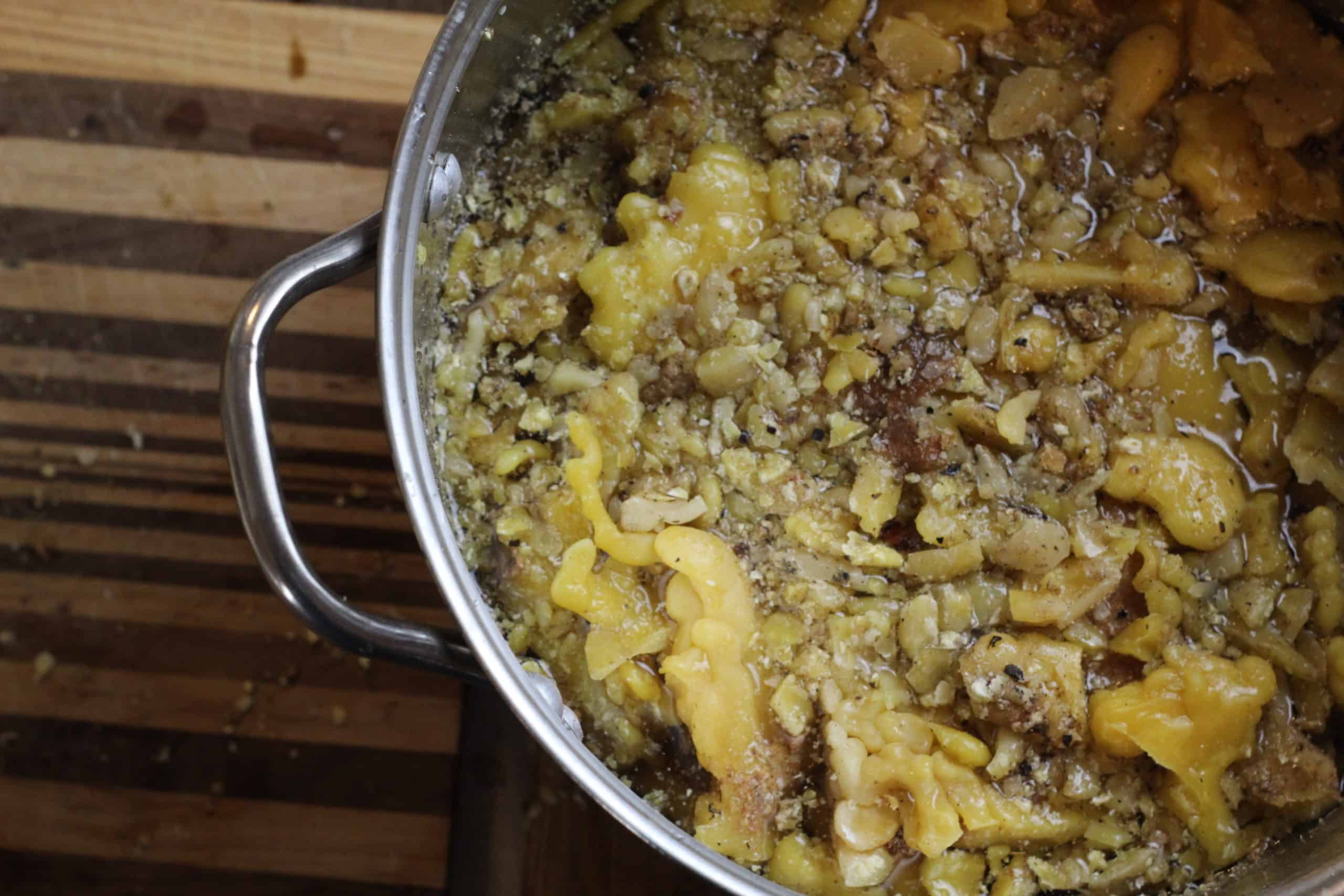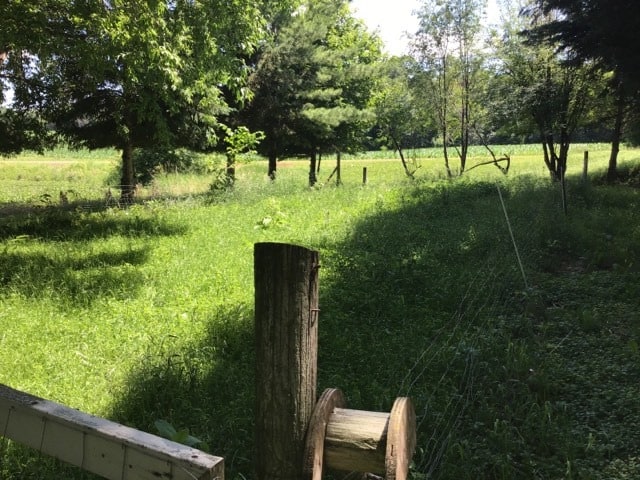How to Run Electric Wire Under a Gate
If you are using electric wire for your livestock fencing, chances are good you will need to know how to run electric wire under a gate. I have done this in several places on our farm and in this post I’ll show you how I do it.
Shocked Into Action
This post is born out of necessity. Most farms will tell you honestly that an OSHA rep would probably faint at some of the jimmy-rigged systems people have in place. Mostly I imagine this is in the form of twine cobbling the farm together.
In this instance, we had a line of electric (sometimes referred to as ‘hot’) wire running across the top of a gate going into our round pen.

Now this has been workable for the last few years. At this point, my husband and I will duck out of habit. However, our chicken coop door is inside the round pen. It’s not very considerate of us to ask a neighbor to come close our chickens if we are away when we have booby traps lying in wait. Not only have people been clothes-lined by this wire, they have also been electrocuted in the process.
The final push to properly run that wire under the fence, was when I shocked myself darn good. I was talking to my husband and closing the metal gate that runs just under and behind the wire. I wasn’t paying attention to how close the gate was. With my arm looped around the gate and my feet firmly planted on the ground, I must have touched the gate to the wire because I was shocked like I have never been shocked in my life. It literally froze me to the ground and I started screaming before I even knew what was going on.
SO. I finally took the twenty minutes necessary to fix that damn wire.
Why do you need to know how to bury electric wire?
By burying the wire under the gate you can open and close the gate as much as you want, and you won’t be disturbing the electric current keeping your fence hot.
Ducking under wires running across a gate is doable, but if you read the story up top you know it isn’t ideal.
What do I need to bury electric wire?
There are a few supplies you’ll need to safely tuck this wire under the ground.

- Insulated Electric Wire – This is wire coated in a type of plastic. A person can touch the outside insulated covering and not get shocked. The insulation could touch a fence post and not ground out. There are different kinds available. Your local fleet supply store and even hardware store should have some. Premier 1 has a good selection online, too.
- PEX Tubing – This is a plastic tube that your insulated wire will run through under ground.
- Wire Snips – Or some other device that can cut through the insulated wire and your tubing.
- Hammer
- Shovel
- Fencing Staples
- Hog Panel Staples
- Screw in or clip on fencing insulator (optional)
How to Run Electric Wire Under a Gate
First Steps
Dig a trench. Starting snug along the inside of one gate post, dig a trench from one post to the other. Go down about 8-12 inches.
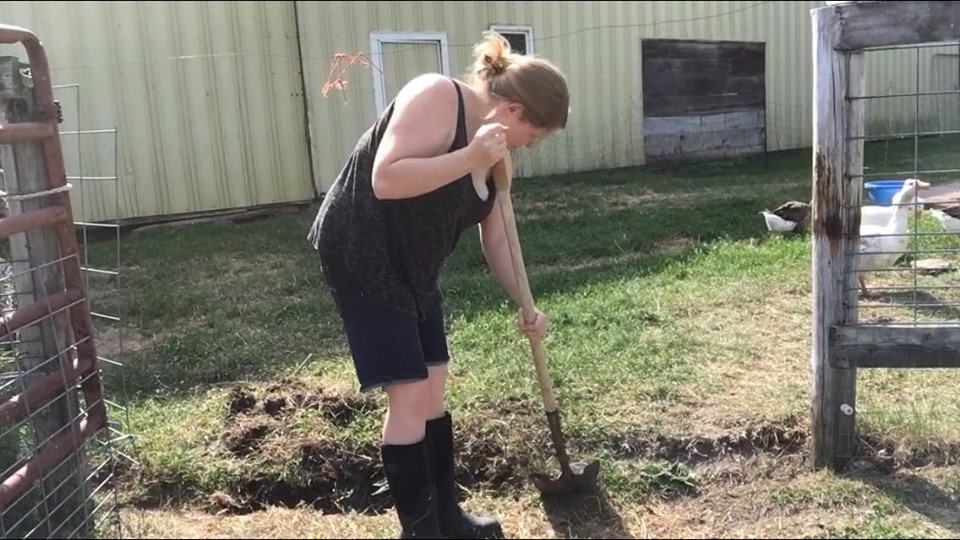
Lay out your PEX tubing. Lay the tubing along the trench. Leave 1-2 feet sticking up on either post. Smoosh it down well with your boot on the ends so you get an accurate idea of how much you need.

Cut the tubing.
Lay out your insulated wire. Slide your insulated wire through the PEX tubing. The length on this will depend on how you want you fence to be. On our fence, I run this wire all the way up to the top of our fence, because that is the only place we have the electric wire. However, if you have a line of electric running a foot or two off the ground, that is all the higher you need your hot wire to go. I always leave a little extra rather than cut myself short. Don’t cut it yet!
Bend the PEX tubing. Around a foot or so out of the ground, grab the end of your tube and bend it so that the hole at the end faces down to the ground. This will keep moisture and other gunk out of your tube, which will degrade your wire. Do this on both sides of your gate.

Figuring in the bend, adjust the length of your insulated wire as necessary. Now you can cut that.
Finishing Touches
Bury the line. Before I hammer in staples, I like to bury the underground portion. Make sure you have it snug and as far into the trench as possible, then cover it up. Stomp over it thoroughly to tamp it down. I never have as much dirt to put in as I took out, so you might need to throw some extra dirt from somewhere on there.
Staple in your tube close to the ground. Hammer in a hog panel staple around your PEX tube/coated wire. Do this fairly close to the ground to keep it in place. Do this on both sides.
Place a staple near where you want the bend to be. Some people bend the tube down, and put a staple around the bent part and the part that is still straight. I have a hard time with this so I use two staples. This first one goes right below where I plan to bend the tube. Do this on both sides.
Bend the tube and staple it down. Bend the tube so the hole is facing the ground, and hammer a staple in around it to keep it in place. Do this on both sides.
Attach your insulated wire. Wherever makes sense for your fencing set-up, attach the insulated wire to the electric wire of your fence. With the insulated wire, you might need to remove a few inches of the insulated coating to expose the wire so you can attach the two. I always feel like I’m in a movie diffusing a bomb when I have to do that trick.

Congratulations on your shock-free gate!
There you have it! You know how to run electric wire under a gate. Hopefully now you’ll have a fence that won’t electrocute you or your farm sitters, and a fence that will keep electric pumping, whether or not that gate is closed.
Full disclosure here, this is how I was taught to do this process. Doesn’t mean there isn’t a better more “proper” way, but this is how I do it and it works for us!
Watch and Learn
Pin it for later





